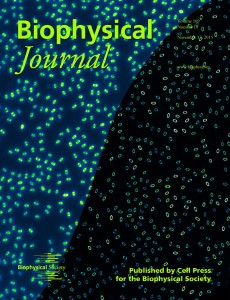 Multi-layered protein coats are used for environmental protection, sensing, and interaction by many micro-organisms, including spore-forming bacteria and viruses. It is potentially very useful to measure the order of protein layers in these microbes, because this may indicate the function of different proteins — for example, which proteins form the outermost layers that protect the spore from lytic enzymes, and which hold the structure together?
Multi-layered protein coats are used for environmental protection, sensing, and interaction by many micro-organisms, including spore-forming bacteria and viruses. It is potentially very useful to measure the order of protein layers in these microbes, because this may indicate the function of different proteins — for example, which proteins form the outermost layers that protect the spore from lytic enzymes, and which hold the structure together?
Electron microscopy studies have established the order of some coat proteins, but the nature of the process is invasive, time-consuming and expensive. Conventional optical microscopy of fluorescent fusion proteins is non-invasive and highly practical, but lacks the resolution to distinguish adjacent protein layers. We have developed a computational technique that allows the ordering and size of coat protein layers to be determined from fluorescence images captured on a traditional wide-field fluorescence microscope.
The cover picture shows a wide-field fluorescence image, cut through to reveal a superresolved reconstruction produced by our ellipsoid localization microscopy method. We first model the spore coats as fluorescent ellipsoidal shells, and simulate the image that would be recorded by a microscope. The parameters of the model, such as position, average radius, aspect ratio, and shell thickness, are iteratively fit to the real image data, allowing us to determine the dimensions of protein shells to a precision better than 10 nm. This identifies the order and geometry of concentric protein layers and produces results consistent with previous electron microscopy studies, where available. Furthermore, our model also includes a parameter for the tendency of proteins to localize more heavily towards the poles, enabling a measurement of structural anisotropy. These parameters can then be fed back into our image generation pipeline, with the effect of optical blurring removed, producing a super-resolved reconstruction of the fluorescent protein shells. The cut-through line in the cover picture visually demonstrates that the sizes and orientations of shells are found correctly.
This ellipsoidal localization microscopy is our first development in a wider class of fluorescent shell localization techniques being developed in the Department of Chemical Engineering and Biotechnology, University of Cambridge. You can find more information about our research here.
- Julia Manetsberger, James Manton, Miklos Erdelyi, Henry Lin, David Rees, Graham Christie, Eric Rees